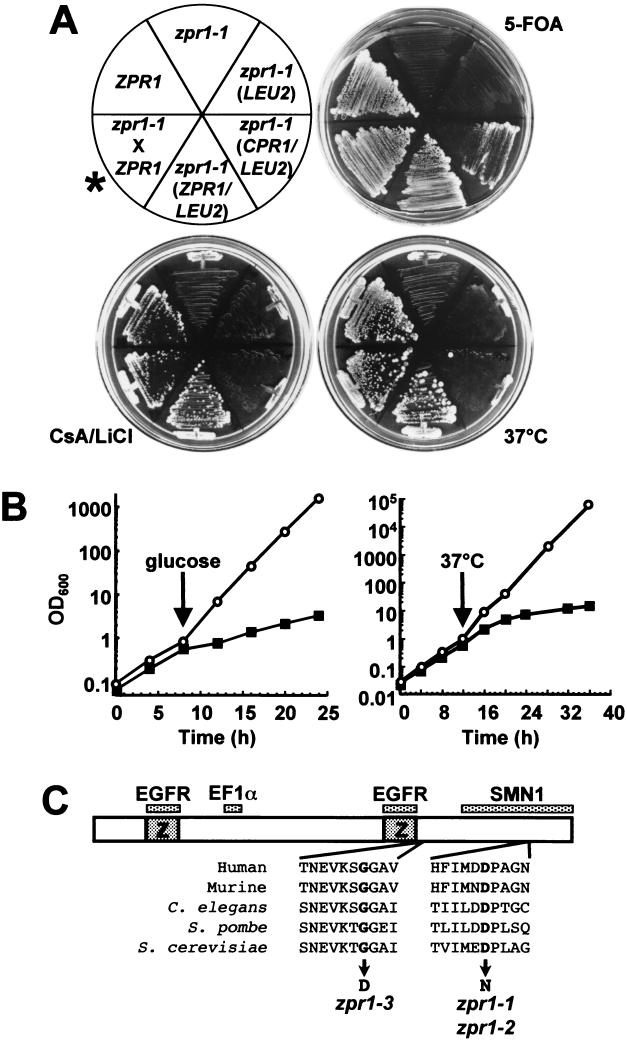FIG. 1.
The slc1-1 strain bears a mutant allele of ZPR1 (zpr1-1) that confers CPR1 dependence and temperature sensitivity. (A) ZPR1 cpr1Δ (HC1-2B) and zpr1-1 cpr1Δ (HC12-1A) strains containing the pCH1122-CPR1 plasmid (CPR1/ADE3/URA3) and the indicated plasmid-borne genes (given in parentheses) were grown on 5-FOA, on CsA and LiCl, or at 37°C. The zpr1-1 strain (HC12-1A) was crossed with a ZPR1 cpr1Δ strain (HT1), and the resulting diploid was 5-FOAR CsA/LiClR and was able to grow at 37°C, indicating that the zpr1-1 mutation is recessive (asterisk). (B) (Left) ZPR1 cpr1Δ (HC1-2B; open circles) and zpr1-1 cpr1Δ (HT23; closed squares) strains containing the plasmid pBM272-CPR1 (GALp-CPR1) were grown to log phase in SC plus galactose and shifted to SC plus glucose at the indicated time. (Right) Wild-type (W303-1A; open circles) and zpr1-1 (HC21-11D; closed squares) cells were grown to log phase at 25°C in yeast extract-peptone-dextrose and shifted to 37°C at the indicated time. Culture densities were monitored by measuring the OD600 at the times indicated. (C) Schematic diagram of Zpr1p showing the locations of the zinc fingers (Z) and the interaction sites of the epidermal growth factor receptor (EGFR), EF1α, and SMN1, the mutations encoded by zpr1-1, zpr1-2, and zpr1-3;the sequences of the same regions from Zpr1p homologues are also indicated. C. elegans, Caenorhabditis elegans.

